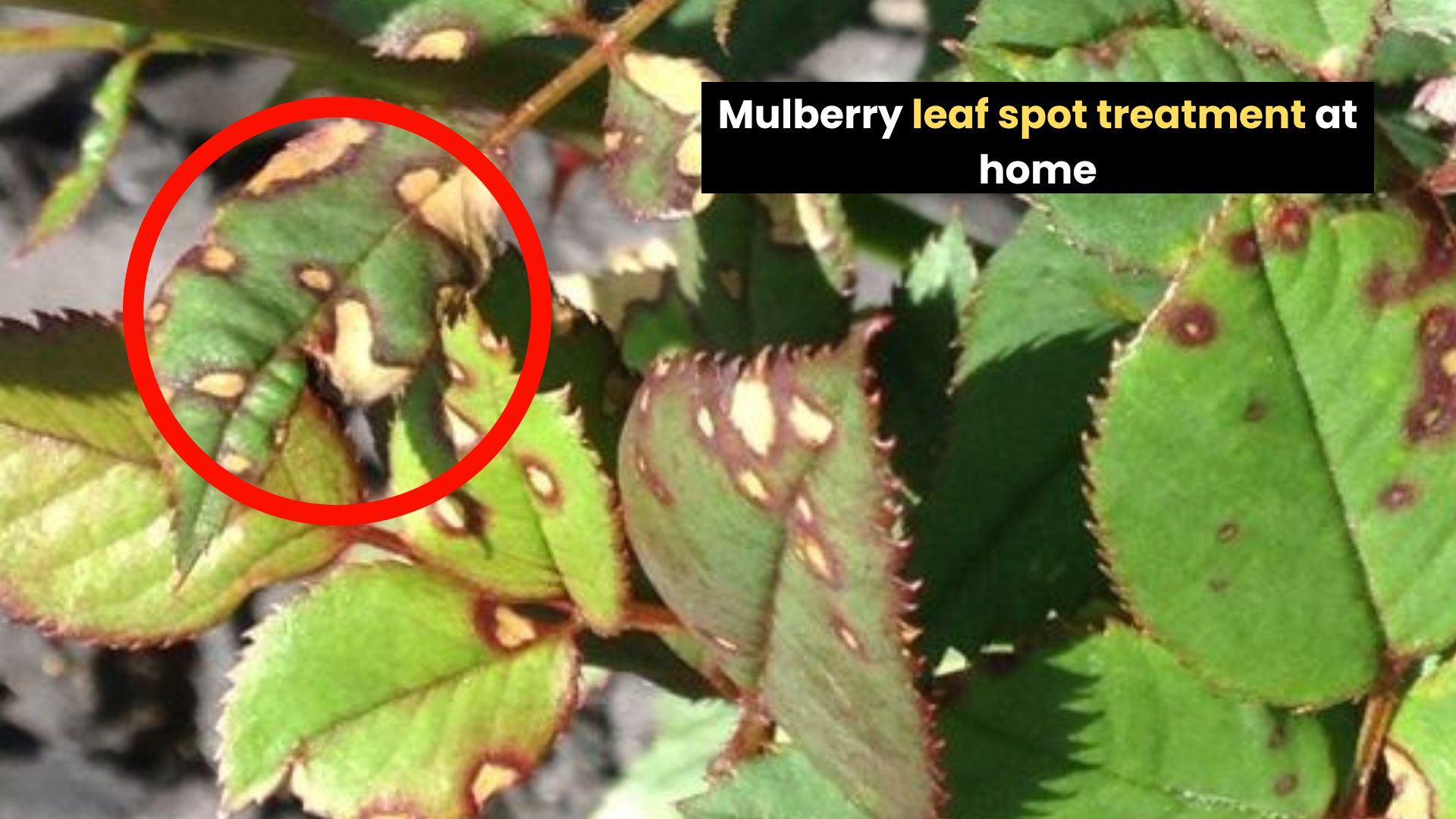The most common problem in mulberry tree is black or brown spots on mulberry leaves, and these spots start increasing a lot over time. This problem is mainly caused by fungal or bacterial infection. If this problem is not resolved on time, it can weaken the leaves of the tree and harm the overall health of the tree.
In this blog, we will learn about the causes, symptoms, and home remedies for the problem of leaf spot on mulberry leaves.
What is leaf spot
Leaf spot is a plant disease in which small spots form on the leaves. These spots are initially light brown, yellow, or green in color, but gradually turn black or brown. This problem is caused by lack of nutrition in plants, fungal or bacterial infection, and moisture
Types of Leaf Spot on Mulberry Leaves
- Fungal Leaf Spot: It is mainly caused by moisture and dirty environment.
- Bacterial Leaf Spot: It is caused by bacterial attack.
Main causes of leaf spot
Leaf spots on mulberry leaves can occur due to many reasons.
- Excessive moisture
Fungal spots start forming on the leaves due to excessive watering, as well as fungal spots are also formed during the rainy season. Fungus and bacteria start growing due to wet leaves. - Lack of air circulation
Sometimes, the air circulation between the branches of the tree starts decreasing, due to which the humidity increases and the infection spreads rapidly. - Infected soil
Fungus or bacteria already present in the soil infect the leaves through the roots of the plants. - Insect attack
Some insects, like aphids, whiteflies, and mealybugs, leave marks on the leaves, which later turn into leaf spot. - Dirty environment
Fungus and bacteria start growing due to the accumulation of dust or dirt on the leaves.
Mulberry leaf spot symptoms
These symptoms are seen when leaf spot occurs on mulberry leaves:
- Small, black, or yellow spots form on mulberry leaves.
- Over time, these spots grow larger and cover the leaves.
- Due to leaf spot, the leaves gradually turn yellow and start drying.
- Due to leaf spot, the infected leaves start falling from the tree.
- Due to leaf spot, the stems become thin and weak, which stops the growth of the tree
Home remedy for leaf spot
Many home and natural remedies can be done to overcome the problem of leaf spot on mulberry leaves. These remedies are not only cheap but are also beneficial for the environment.
Neem oil
You can use neem oil to remove leaf spot on mulberry leaves. Neem oil is a natural fungal and bacterial agent, which helps protect plants from leaf spot.
Method of making the solution: Mix 5 ml neem oil and a few drops of soap liquid in 1 liter of water. Mix this solution well. Fill this mixture in a spray bottle and spray it on the leaves. Use it 2 to 3 times a week. Neem oil kills fungus and bacteria and increases the immunity of plants
Baking soda spray
Baking soda can be a good option to remove leaf spot on mulberry leaves. Baking soda is used as a natural fungal killer.
Method of making: Mix one teaspoon of baking soda and a few drops of soap in 1 liter of water. Mix this solution well. Spray the mixture on the leaves of the tree. Use it 2 times a week. Baking soda prevents the growth of fungus and keeps the leaves healthy.
Garlic solution
Garlic can be used to remove leaf spot. Leaf spot in mulberry leaves is caused by fungal infection. Therefore, garlic has antifungal properties, which help in preventing leaf spot.
Method of making solution: Grind 4 to 5 garlic cloves and mix it in 1 liter of water. Filter this mixture and fill it in a spray bottle. Sprinkle this mixture on the leaves. Use it about twice a week.
Measures to prevent leaf spot
To remove leaf spot from mulberry leaves, it is important to take preventive measures along with home remedies so that the problem of leaf spot does not occur again.
- Water the mulberry tree from time to time, but avoid overwatering.
- Cut the branches of the tree from time to time and improve air circulation.
- Immediately cut and remove the leaves on which leaf spot is visible.
- Use organic fertilizer to increase the immunity of plants.
- Mix cow dung manure and neem bark in the soil to improve the quality of the soil.
Read This:
Hi! I’m Thayer Cruz, the creator of MysteriousGardening. I hold a Bachelor’s degree in Horticulture and Landscape Architecture from Purdue University, United States. My passion for plants and gardening grew during my studies, where I learned about everything from soil science to plant care.
Through MysteriousGardening, I share practical gardening tips, creative ideas, and insights from both my education and personal experience. Whether you’re growing your first plant or managing a full garden, I’m here to help make gardening fun and rewarding. Let’s grow something amazing together!
